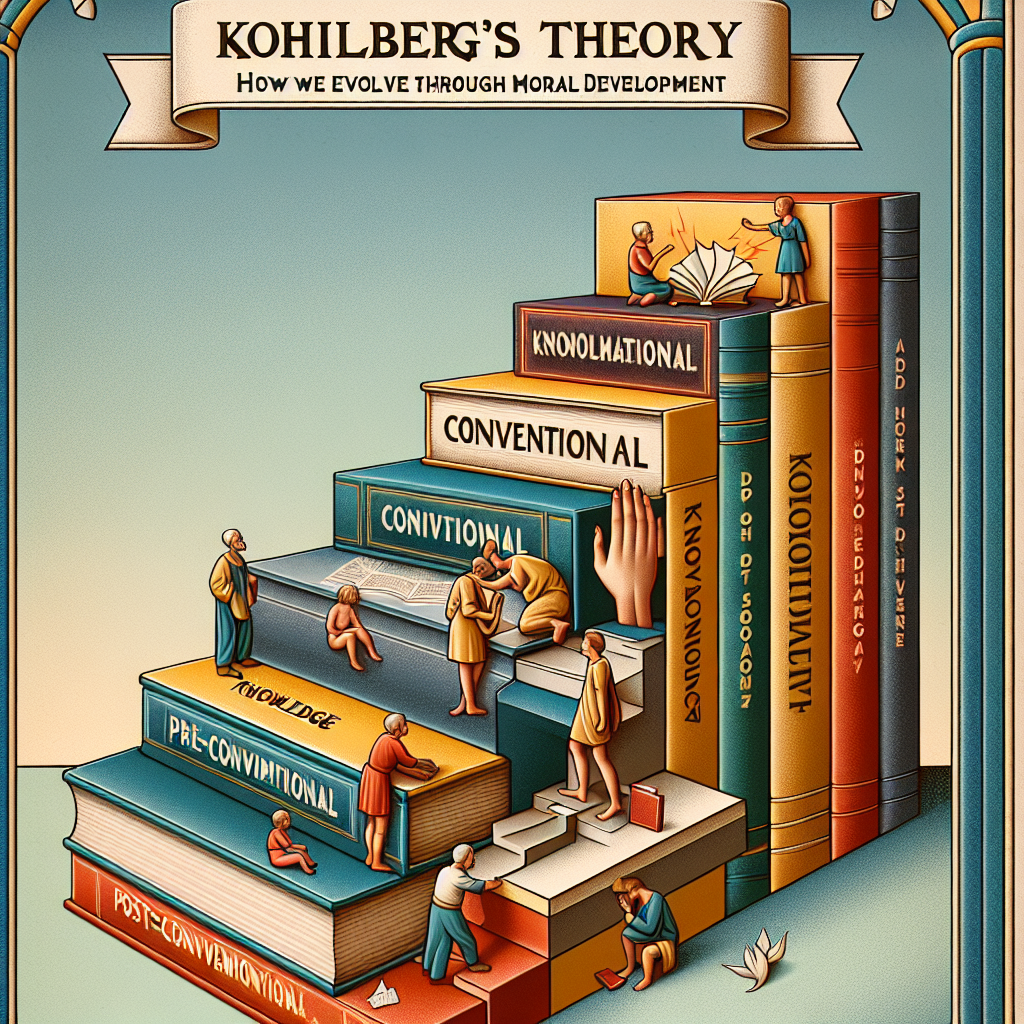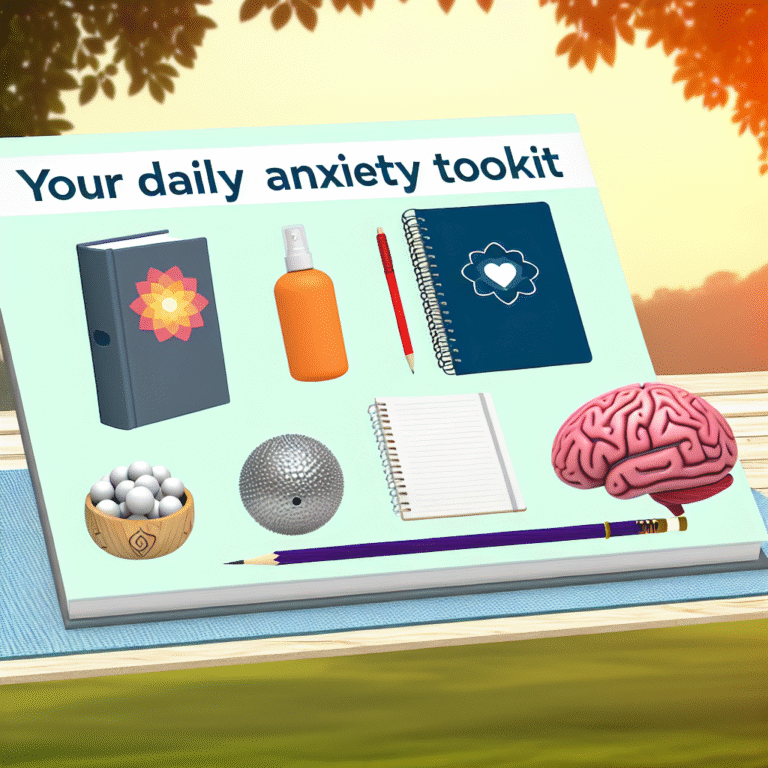
Introduction
Imagine standing at a crossroads, where each choice reflects not just a decision but a revelation of your moral compass. This pivotal moment illustrates the essence of Kohlberg’s Theory: How We Evolve Through Moral Development. Grounded in psychology, this theory transcends mere academic interest, impacting our everyday decisions and societal structures. Understanding how our morals are shaped can profoundly influence our relationships, careers, and society at large. Join us on this enlightening journey through the stages of moral development as theorized by Lawrence Kohlberg.
Understanding Kohlberg’s Framework
The Foundation of Kohlberg’s Theory
Kohlberg proposed that our moral development unfolds in stages, each building upon the last. Drawing from Piaget’s cognitive development stages, Kohlberg argued that moral reasoning matures through six distinct levels, grouped into three overarching levels: pre-conventional, conventional, and post-conventional. Each stage reflects a different perspective on justice, ethics, and social norms.
Table 1: Stages of Moral Development
| Level | Stage Number | Description |
|---|---|---|
| Pre-conventional | 1 | Obedience and Punishment Orientation |
| 2 | Individualism and Exchange | |
| Conventional | 3 | Good Interpersonal Relationships |
| 4 | Maintaining Social Order | |
| Post-conventional | 5 | Social Contract and Individual Rights |
| 6 | Universal Principles |
The Pre-Conventional Level
At the pre-conventional level, children make decisions based on direct consequences.
Stage 1: Obedience and Punishment Orientation emphasizes avoiding negative outcomes. For example, a child refrains from stealing a cookie because they fear punishment.
- Stage 2: Individualism and Exchange sees children recognizing that different interests can coexist. A young boy might share his toys in exchange for his friend’s snacks, understanding that mutual benefits arise from cooperation.
The Conventional Level
As children mature, they enter the conventional level, where social norms take precedence over individual desires.
Stage 3: Good Interpersonal Relationships reflects the desire for approval and conformity. A teenager may adopt a certain style or behavior to fit in, believing that being liked is paramount.
- Stage 4: Maintaining Social Order focuses on obeying rules for the sake of societal function. For example, an employee follows company policies not just to avoid being reprimanded, but to contribute to the collective well-being of the organization.
The Post-Conventional Level
Finally, as individuals reach the post-conventional level, their moral reasoning becomes more abstract and principled.
Stage 5: Social Contract and Individual Rights allows for questioning the established norms. An activist advocating for civil rights is often driven by a belief that laws should reflect social justice rather than maintaining the status quo.
- Stage 6: Universal Principles is the peak of moral reasoning, where principles like justice, equality, and respect for human dignity prevail. Think of figures like Mahatma Gandhi or Martin Luther King Jr., who championed these ideals, often at great personal risk.
Real-World Applications and Case Studies
Case Study 1: The Classroom Setting
In a pilot program at a local high school, educators implemented Kohlberg’s Theory to foster moral discussions around ethical dilemmas. Students analyzed various scenarios, such as the dilemma of lying to protect a friend.
Analysis: This approach allowed students to engage in dialogue that challenged their moral reasoning. Many students exhibited shifts from conventional views to more post-conventional thinking, showcasing the dynamic aspect of Kohlberg’s stages in real-time.
Case Study 2: Corporate Ethics
A Fortune 500 company utilized Kohlberg’s Theory as a framework for developing its corporate social responsibility (CSR) training program. Employees learned to identify their ethical stance within the stages of moral development and how these stances impacted their decision-making processes.
Analysis: By embedding moral reasoning into corporate culture, the company reported improved employee satisfaction and ethical decision-making. Employees felt more empowered to advocate for ethical practices, demonstrating the practical relevance of Kohlberg’s Theory in a corporate setting.
Critiques and Limitations of Kohlberg’s Theory
While Kohlberg’s Theory: How We Evolve Through Moral Development offers a compelling framework, it’s not without its critiques.
Cultural Bias
Kohlberg’s work is criticized for its Western-centric perspective, which may not universally apply across different cultures. In many societies, moral reasoning may prioritize community or familial expectations over individual rights, challenging Kohlberg’s stages.
Gender Bias
Carol Gilligan, a contemporary of Kohlberg, argued that his model overlooked women’s moral reasoning, which often emphasizes relationships and care over abstract principles. This perspective has led to debates on whether moral development is a purely linear or hierarchical process.
Practical Application
Although the theory provides a structured approach to understanding moral development, translating these stages into practical applications can be challenging. Each individual’s experiences and backgrounds greatly influence their moral reasoning, complicating the neat categorization proposed by Kohlberg.
Lessons from Kohlberg’s Theory: Actionable Insights
Understanding Kohlberg’s Theory: How We Evolve Through Moral Development offers us invaluable lessons applicable to our daily lives.
Reflect on Your Moral Decisions: Regularly evaluate your choices. Are they driven by fear of punishment, social norms, or deeply held principles? This reflection can help you identify your current stage and inspire change.
Foster Open Conversations: Encourage discussions around ethical dilemmas in your personal and professional circles. Sharing viewpoints can catalyze moral growth and foster deeper relationships.
Champion Ethical Practices: Whether in family settings or corporate cultures, advocate for frameworks that support moral reasoning and ethical behavior. Change often begins with individuals willing to voice their beliefs.
Embrace Diversity: Understanding different cultural perspectives on morality can enrich your worldview. Learning how various societies approach moral dilemmas can lead to greater empathy and social harmony.
- Continuous Growth: Recognize that moral development is a lifelong journey. Commit to ongoing learning and self-improvement to navigate complex moral landscapes courageously.
FAQs About Kohlberg’s Theory
1. What is Kohlberg’s Theory?
Kohlberg’s Theory explores the stages of moral development, describing how people evolve in their understanding of morality from childhood through adulthood.
2. How many stages are in Kohlberg’s Theory?
Kohlberg identified six stages, grouped into three levels: pre-conventional, conventional, and post-conventional.
3. Is Kohlberg’s Theory applicable to all cultures?
While it provides a useful framework, criticisms suggest that its Western-centric approach may not universally apply across different cultural contexts.
4. How can educators apply Kohlberg’s Theory in the classroom?
Educators can facilitate discussions around ethical dilemmas and promote moral reasoning activities to help students progress through the stages of moral development.
5. What are the real-world implications of Kohlberg’s Theory?
Understanding moral development can enhance interpersonal relationships, inform corporate ethics, and promote social responsibility within communities.
Conclusion
In a world where moral decisions shape our society, understanding Kohlberg’s Theory: How We Evolve Through Moral Development is essential. It challenges us to reflect, engage, and grow, turning every ethical dilemma into an opportunity for personal and collective evolution. As you navigate your own moral landscape, remember: growth is not a destination but a journey. Embrace each step and inspire others to do the same. Together, we can cultivate a future rooted in understanding, respect, and compassion.

















